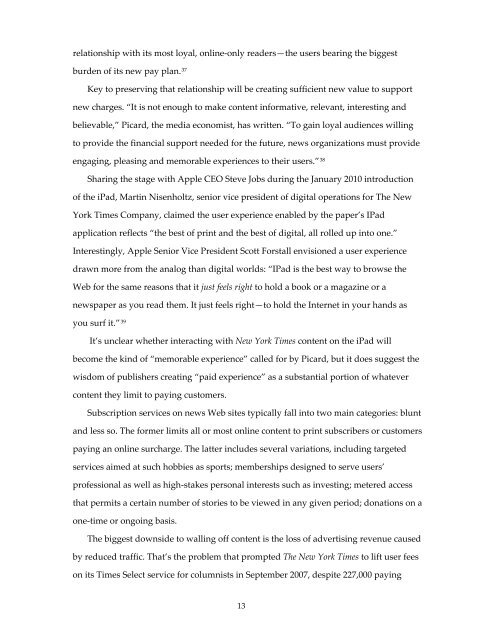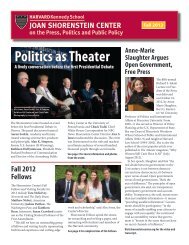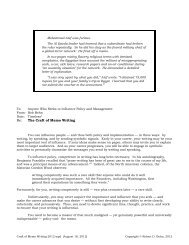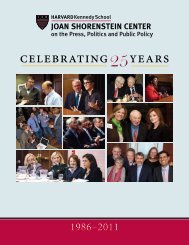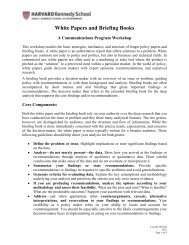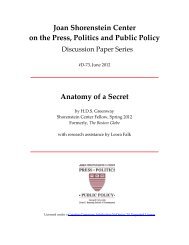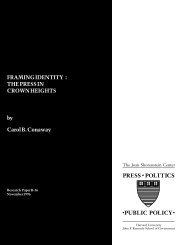A User-First Framework for Sustaining Local News - Harvard ...
A User-First Framework for Sustaining Local News - Harvard ...
A User-First Framework for Sustaining Local News - Harvard ...
Create successful ePaper yourself
Turn your PDF publications into a flip-book with our unique Google optimized e-Paper software.
elationship with its most loyal, online‐only readers—the users bearing the biggest<br />
burden of its new pay plan. 37<br />
Key to preserving that relationship will be creating sufficient new value to support<br />
new charges. “It is not enough to make content in<strong>for</strong>mative, relevant, interesting and<br />
believable,” Picard, the media economist, has written. “To gain loyal audiences willing<br />
to provide the financial support needed <strong>for</strong> the future, news organizations must provide<br />
engaging, pleasing and memorable experiences to their users.” 38<br />
Sharing the stage with Apple CEO Steve Jobs during the January 2010 introduction<br />
of the iPad, Martin Nisenholtz, senior vice president of digital operations <strong>for</strong> The New<br />
York Times Company, claimed the user experience enabled by the paper’s IPad<br />
application reflects “the best of print and the best of digital, all rolled up into one.”<br />
Interestingly, Apple Senior Vice President Scott Forstall envisioned a user experience<br />
drawn more from the analog than digital worlds: “IPad is the best way to browse the<br />
Web <strong>for</strong> the same reasons that it just feels right to hold a book or a magazine or a<br />
newspaper as you read them. It just feels right—to hold the Internet in your hands as<br />
you surf it.” 39<br />
It’s unclear whether interacting with New York Times content on the iPad will<br />
become the kind of “memorable experience” called <strong>for</strong> by Picard, but it does suggest the<br />
wisdom of publishers creating “paid experience” as a substantial portion of whatever<br />
content they limit to paying customers.<br />
Subscription services on news Web sites typically fall into two main categories: blunt<br />
and less so. The <strong>for</strong>mer limits all or most online content to print subscribers or customers<br />
paying an online surcharge. The latter includes several variations, including targeted<br />
services aimed at such hobbies as sports; memberships designed to serve users’<br />
professional as well as high‐stakes personal interests such as investing; metered access<br />
that permits a certain number of stories to be viewed in any given period; donations on a<br />
one‐time or ongoing basis.<br />
The biggest downside to walling off content is the loss of advertising revenue caused<br />
by reduced traffic. That’s the problem that prompted The New York Times to lift user fees<br />
on its Times Select service <strong>for</strong> columnists in September 2007, despite 227,000 paying<br />
13


